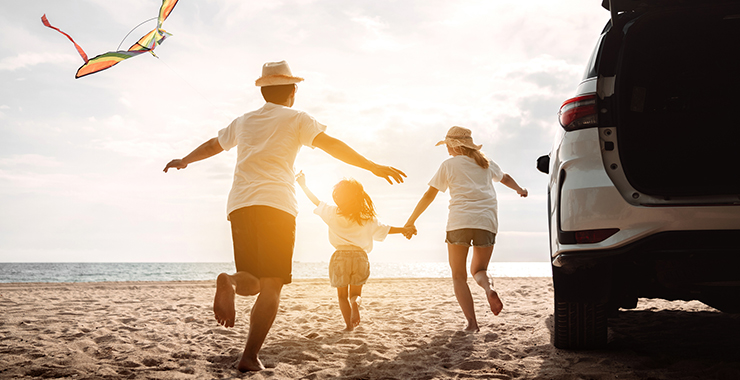5 Ways to Safely Enjoy the Summer Sun

It’s summertime – fun in the sun! But it’s not so fun when you end up with a sunburn. While sunshine feels good and is essential for your body to process vitamin D, ultraviolet (UV) radiation can quickly damage your skin, no matter your skin tone.
- 1 in 5 Americans get skin cancer.
- Skin cancer is the most common type of cancer in the U.S.
- UV light exposure causes most skin cancers.
- Just FIVE sunburns double your risk of developing melanoma, the deadliest form of skin cancer
Protect yourself this summer – and all year long – using five ways to safely enjoy the sun.
1. Cover up.
Wear a wide-brimmed hat (to protect your nose, ears and back of the neck), long-sleeved shirt and pants.
2. Stay shaded.
The sun is strongest at midday. Seek shade between the hours of 10 a.m. and 4 p.m. The sun can still damage your skin on cloudy days or in the winter, so it’s important to wear protection all year long.
3. Wear sunscreen and enough of it.
The U.S. Food and Drug Administration recommends sunscreen with a sun protection factor (SPF) of at least 15 to protect against ultraviolet aging (UVA) and ultraviolet burn (UVB) rays. The National Council on Skin Cancer Prevention advises applying at least one ounce (a palmful) of sunscreen every two hours, and more often if you are sweating or swimming – even if the sunscreen is waterproof (www.weillcornell.org).
4. Protect your eyes
According to an article in the American Academy of Ophthalmology, UV radiation, whether from natural sunlight or indoor artificial rays, can damage the eye's surface tissues as well as the cornea and lens. Choose sunglasses with a UV400 rating or "100% UV protection" on the label. These sunglasses block more than 99% of UVA and UVB radiation and provide the most protection against UV rays. Do not mistake dark-tinted sunglasses as having UV protection (www.FDA.gov)
5. Check the UV index
Alongside the day's high and low temperatures, weather reports generally contain a UV index for a particular time. But what does it mean, and what should you do about it? Both UVA and UVB rays damage skin cells and both are thought to contribute to skin cancer. But UVB causes sunburn and UVA contributes more to aging and penetrates deeper skin layers.
The Ultra Violet Radiation Index (UVI) has been around for more than 20 years and gives a measure of the intensity of the sun, using both UVA and UVB. The World Health Organization recommends protecting our skin from the sun when the UVI is 3 or higher. So, the "alert" applies to the block of time the UVI is 3 or above through the course of any day. UVI 1-2 is low, which generally means it's safe to be outdoors unprotected. Other classifications are moderate (3-5), high (6-7), very high (8-10) and extreme (11+) (www.cancer.org.au).
With a little planning and awareness, you can enjoy the great outdoors all summer long and help prevent skin problems down the road.